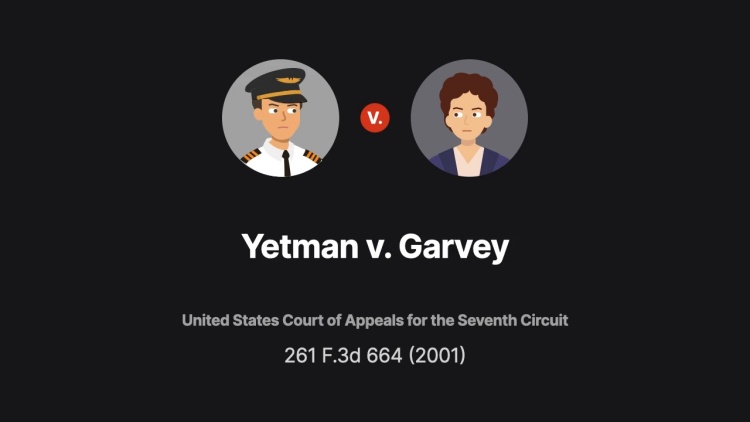Yetman v. Garvey
United States Court of Appeals for the Seventh Circuit
261 F.3d 664 (2001)
- Written by Kathryn Lohmeyer, JD
Facts
The Federal Aviation Act of 1958 (Act), 49 U.S.C. § 44701(a)(4), made the Federal Aviation Administration (FAA) responsible for ensuring airline safety and obligated the FAA to set a maximum term of service for pilots. In 1958, the FAA promulgated the Age Sixty Rule, which capped the maximum age for pilots at 60 years based on an increased risk of sudden incapacitation from heart attack or stroke at that age. Although the Act permitted the FAA to grant exemptions, the FAA did not grant any exemptions to the Age Sixty Rule, which withstood numerous challenges. In 1995, FAA Administrator Jane Garvey (defendant) announced that exemptions would be unavailable absent a showing of a new method for assessing a pilot’s risk of sudden incapacitation. Bert Yetman and other pilots (plaintiffs) devised and passed a rigorous battery of medical and neuropsychological testing. The plaintiffs sought exemptions to the Age Sixty Rule, arguing that the inclusion of a new neuropsychological screening tool, the CogScreen-AE, rendered their testing process sufficient to assess the abilities and risks of pilots approaching 60 years of age. The FAA had developed and used the CogScreen-AE to assess the cognitive function of pilots seeking medical exemptions. However, the FAA maintained that (1) there was not enough data to ensure the new test reliably measured cognitive function, and (2) there was no established cutoff score to determine when a pilot was unfit to fly. The FAA issued an order denying the plaintiffs’ exemption requests. The plaintiffs sought review of the FAA’s order in the United States Court of Appeals for the Seventh Circuit.
Rule of Law
Issue
Holding and Reasoning (Flaum, C.J.)
What to do next…
Here's why 899,000 law students have relied on our case briefs:
- Written by law professors and practitioners, not other law students. 47,000 briefs, keyed to 994 casebooks. Top-notch customer support.
- The right amount of information, includes the facts, issues, rule of law, holding and reasoning, and any concurrences and dissents.
- Access in your classes, works on your mobile and tablet. Massive library of related video lessons and high quality multiple-choice questions.
- Easy to use, uniform format for every case brief. Written in plain English, not in legalese. Our briefs summarize and simplify; they don’t just repeat the court’s language.





